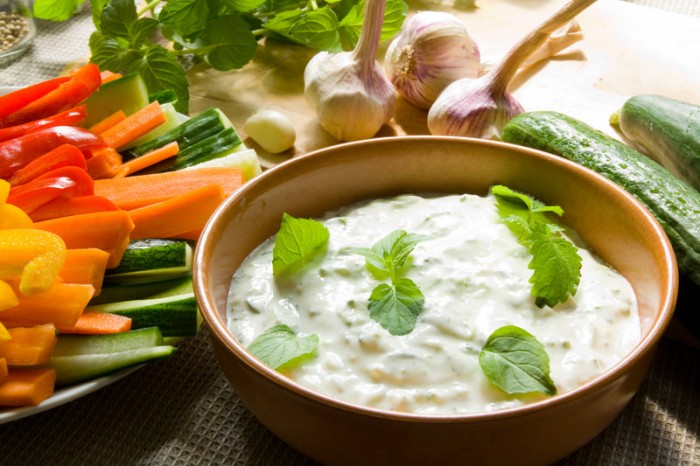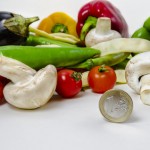A classic Egyptian snack, Salatit Zabadi, is the Egyptian cousin of the Greek dip tzatziki. Zabadi is traditionally served as one of a number of mezze style dips (hummus, baba ganoush) alongside warm pitta bread and salad.
Skills Check
Follow a recipe; follow food safety and hygiene rules; tidy away; chop using the bridge/claw technique safely; use weighing scales; snip herbs with scissors; use a colander; crush garlic.
Allergens
Milk
(Please note the allergens listed are indicative only. Allergens vary depending on brand; check the labels on the products you use.)
Equipment
Colander, knife, chopping board, bowl, spoon, weighing scales, garlic crusher, scissors, small bowl.
Ingredients:
- 500g Greek-style plain yogurt
- 1 small English cucumber, deseeded
- Salt
- 1 clove of garlic, crushed
- A handful of mint leaves, chopped
- Olive oil
Method
- Drain the yogurt of any liquid to make it as thick as possible.
- First slice the cucumber into very thin slices, and then dice them. Place the diced cucumber in a bowl and sprinkle with salt. Leave for one hour.
- Drain the liquid from the cucumber and add the yogurt, garlic, mint and olive oil. Garnish with a mint sprig and serve with warm pitta bread or vegetable sticks.
So thinking about salatit zabadi ...

Vegetables are so good for us! Low in fat, sugar and calories and high in vitamins and minerals.
Nutritional Information
| - | Energy | 181kJ / 44kcal | 2% |
| Med | Fat | 2.6g | 4% |
| Med | Saturates | 1.4g | 7% |
| Low | Sugars | 1.5g | 2% |
| Med | Salt | 0.4g | 7% |
per 62g serving
% of an adult's reference intake
Typical values per 100g: Energy 291kJ / 70kcal
Notes
A traffic light system is used on nutrition labels to make it easier to see which foods and drinks are lower in calories, fat, sugar and salt. Try and choose more ‘greens’ and ‘ambers’ and fewer ‘reds’, and stick to smaller portions of ‘reds’.
Just because a recipe or a food has a red traffic light doesn’t mean you shouldn’t eat it. Understanding why a food or recipe might have a red light can be helpful. For example oily fish is high in total fat and so any recipe containing oily fish is likely to be ‘red’ for fat. But it is recommended that we eat oily fish at least once a week because the type of fat it contains is beneficial for our health.
% Reference Intakes are also shown. Reference Intakes are guidelines about the approximate amount of particular nutrients and energy required for a healthy diet (based on an average-sized woman doing an average amount of physical activity). Most children will require less than these Reference Intakes. The contribution of one serving of a food or drink to the Reference Intake for each nutrient is expressed as a percentage.




